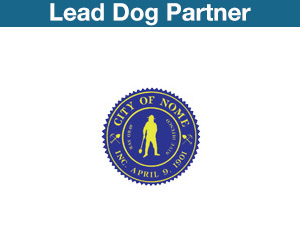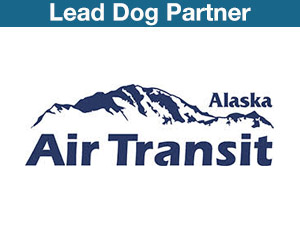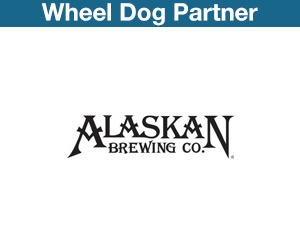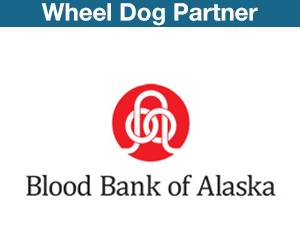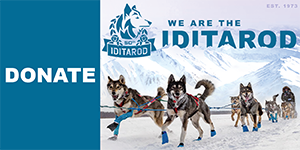
By Lori E. Gordon, DVM
Veterinary Surgical Care, Inc.
MA Task Force 1 US&R Veterinary Officer, NVRT Veterinary Officer
The short answer is yes, sled dogs do get frostbite. The details, however, give a better picture of why, where, when, and how often this occurs, as well as steps mushers take to prevent frostbite and treatment methods once it is diagnosed.
Frostbite is, quite simply, the freezing of a body tissue. This is a concern when an unprotected area of the body is exposed to extremely low temperatures. Not only severe cold, but wind and moisture play a part. Wind chill worsens the effect of cold temperatures, and a moist exposed body part will be at higher risk. So depending on the conditions for the race that year, frostbite may be seen more often or some years not at all.
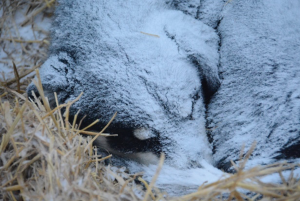
Dog on the trail at Unalakleet curled up asleep
Sled dogs are acclimated to the cold environment in which they will run. Even shorter-haired dogs will grow a thicker coat that protects them from the chill, which is why you may see snow on top of a curled-up sleeping dog – they are so well insulated that they keep all their body heat in and so the snow on them does not melt! Parts of their body most susceptible include tips of the ears and tail, tips of their toes, and their genitalia (vulva and nipples for the girls, prepuce and testicles or the boys).
Both physically and behaviorally ‘winterized’ dogs are designed to avoid frostbite. Ears, tails, prepuce, and vulva are protected by fur that has thickened for the winter, and the way they curl up to rest also protects the mammary chain and testicles. In addition, mushers provide straw to elevate their sled dogs off the snow. There are also fur-lined covers mushers place to further protect these vulnerable areas. While the dogs are trotting along the trail, their vascular system is pumping blood to the farthest reaches of their body, an additional warming and protective measure to keep ears and tails from getting too cold. Their toes are also protected by the booties worn during the race.
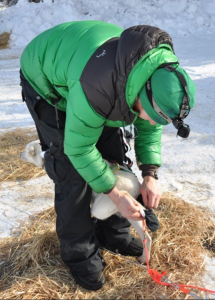
Musher Kelly Maixner placing booties on his dog at the McGrath checkpoint.
If a sled dog has frostbite, the musher will treat by keeping the area clean and covering it to protect from further injury. Frostbite lesions are usually minor, and rarely are the reason for a musher to remove the dog from the team to be cared for by veterinary staff. During the past eight years treating sled dogs, I have seen only a handful of frostbite cases. But if we do get one, there are several treatment options, depending on the specific case. These include drying, cleaning, and warming up the area – these dogs may also be brought into a heated enclosure for the duration of their stay. Antibiotics and pain relief medications may also be used to assure a quick and comfortable recovery.
In summary, yes, frostbite is a concern for sled dogs during the Iditarod, especially in extreme cold, wind, and moisture conditions. It is something dogs naturally and mushers know to protect against, what to look for and how to treat if it occurs – which thankfully is not very often.
Disclaimer: The Content is not intended to be a substitute for professional veterinary medical advice, diagnosis, or treatment. Always seek the advice of your veterinarian with any questions you may have regarding a medical condition for your pet.







